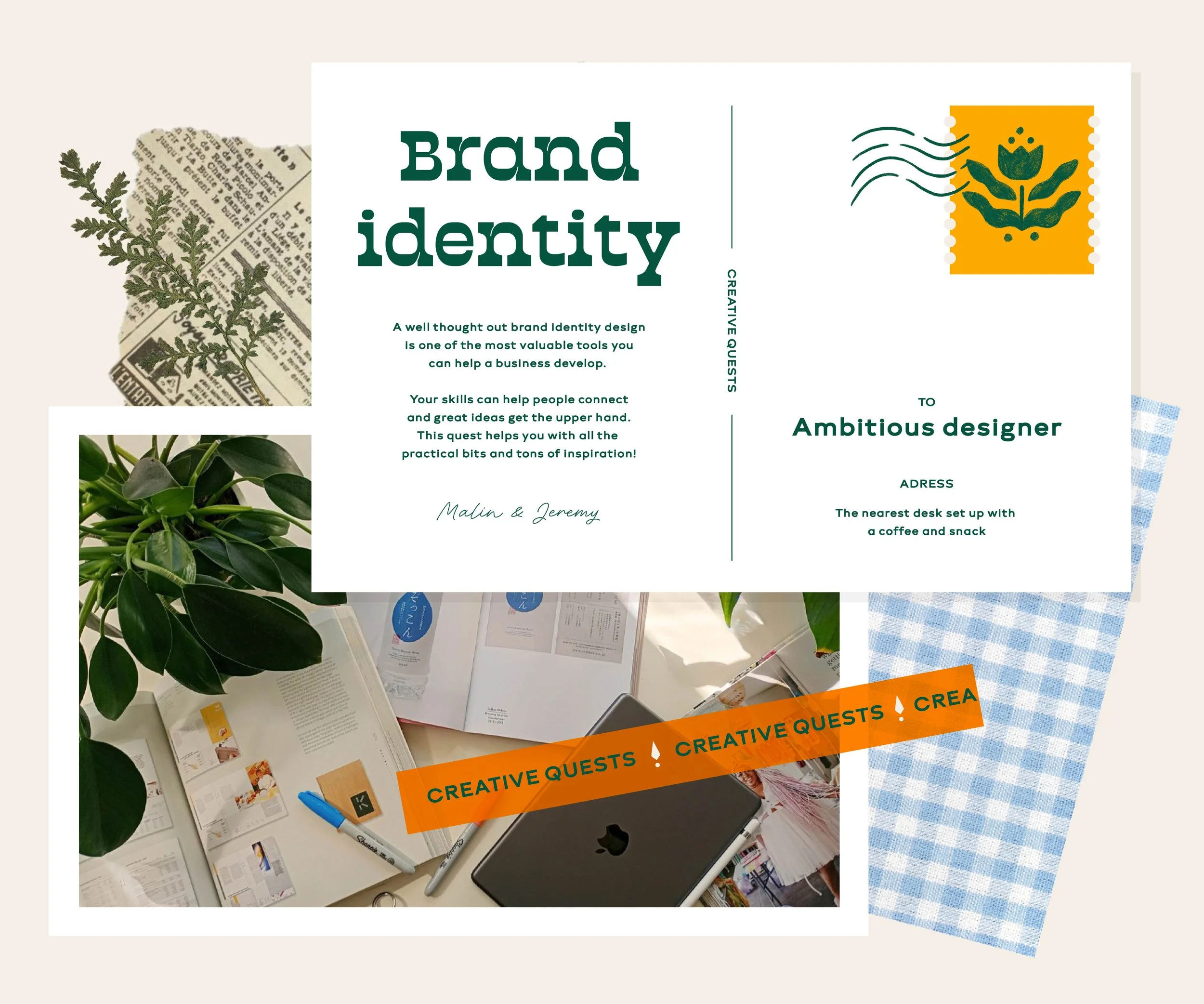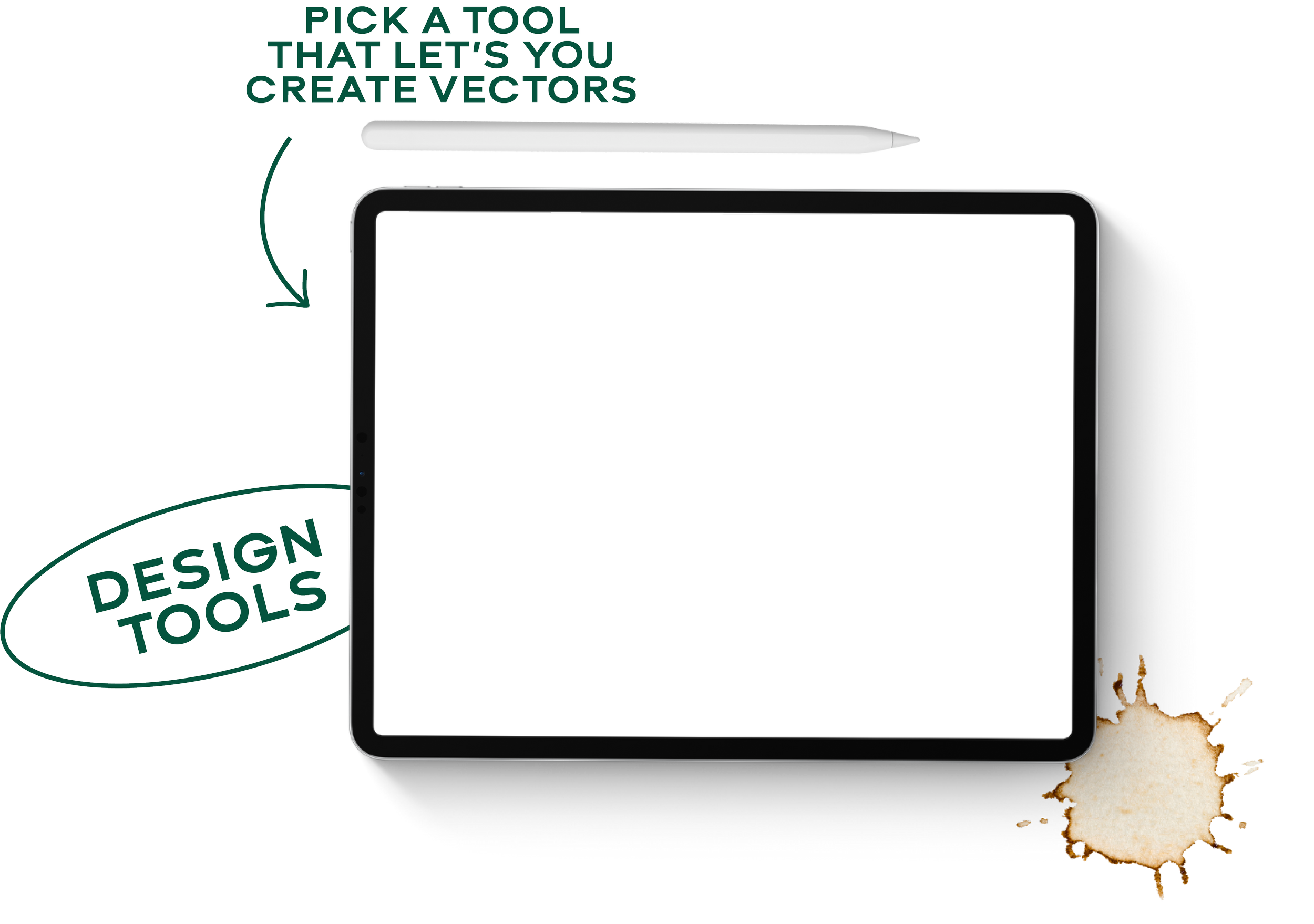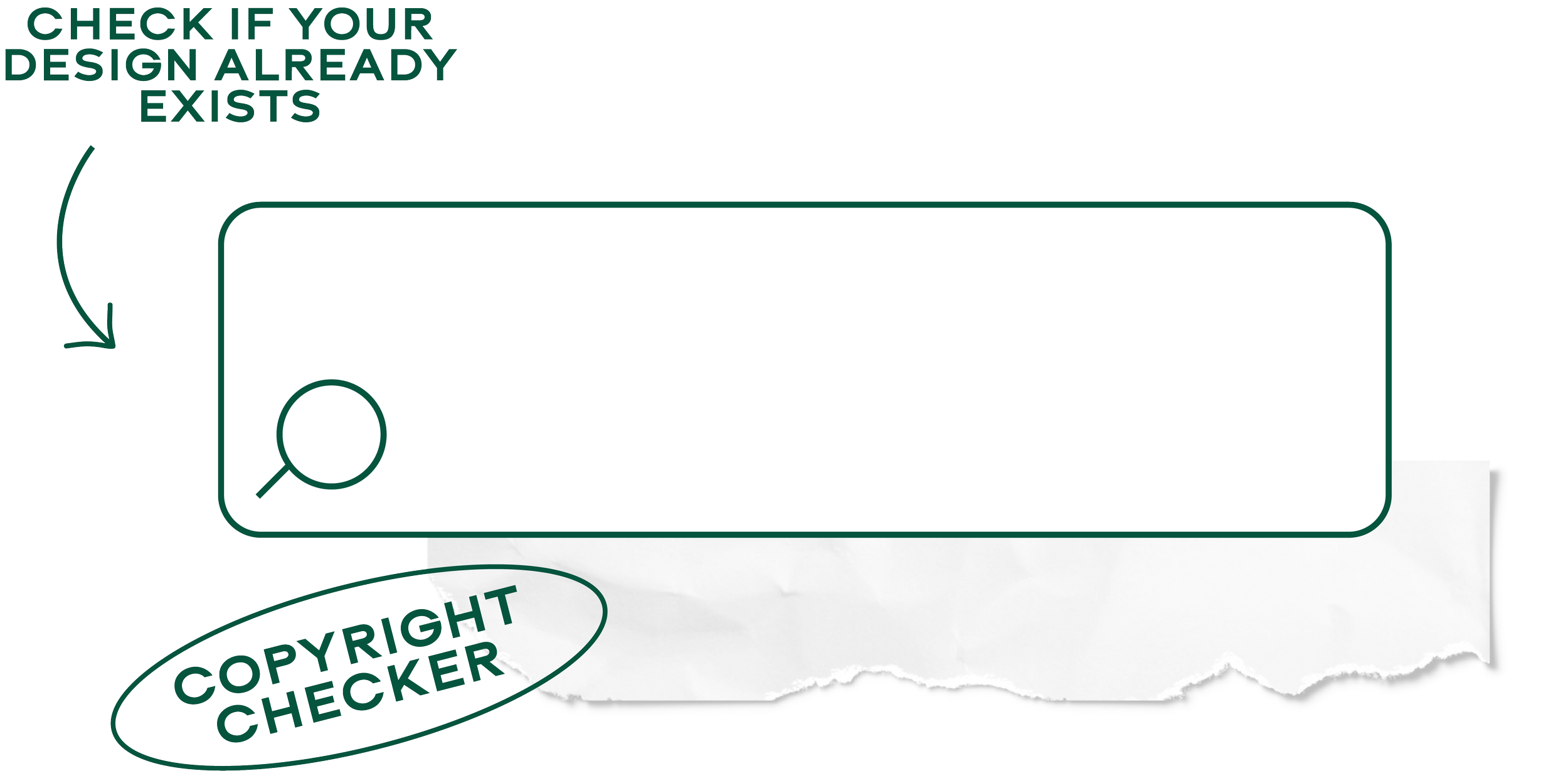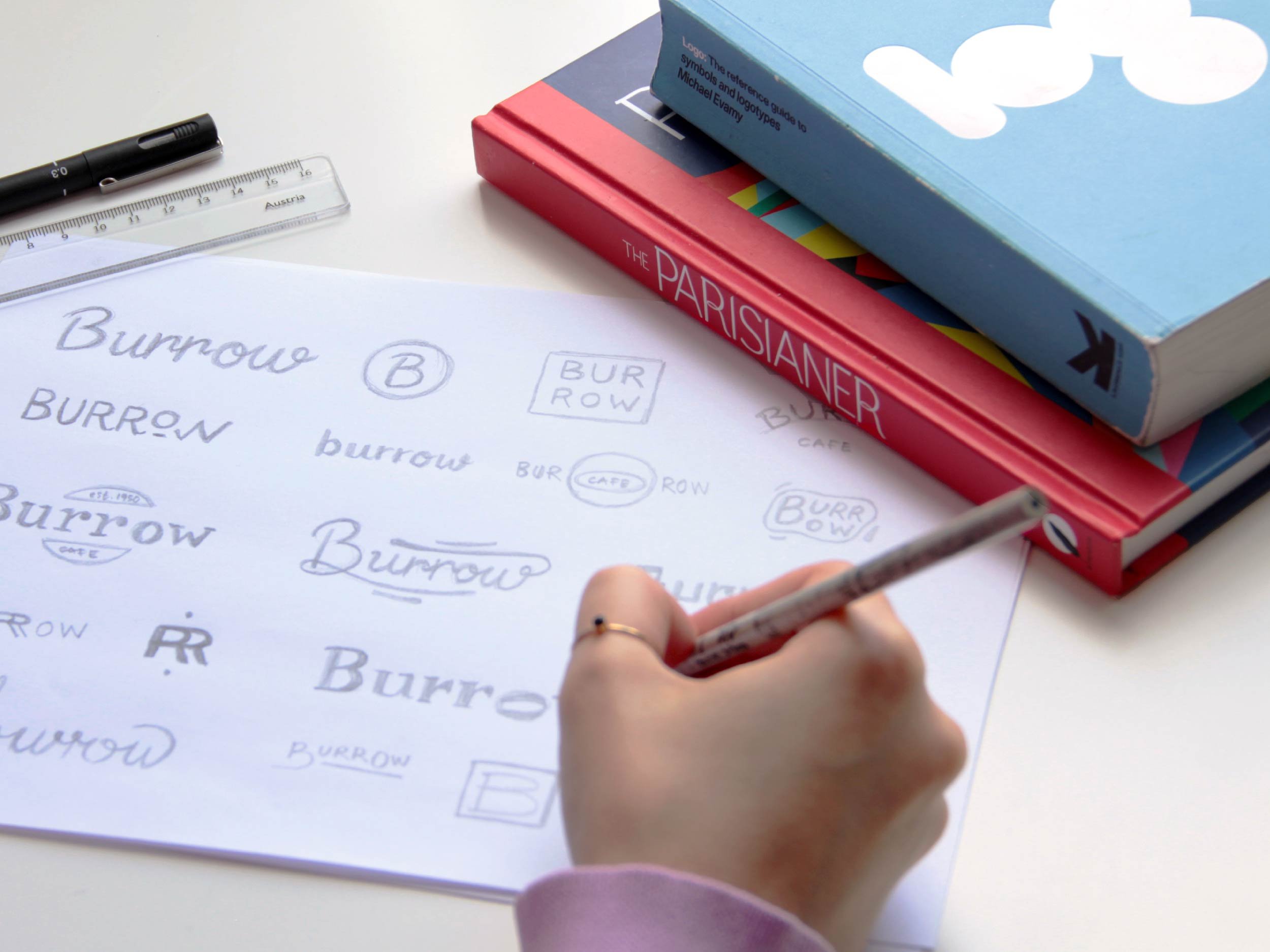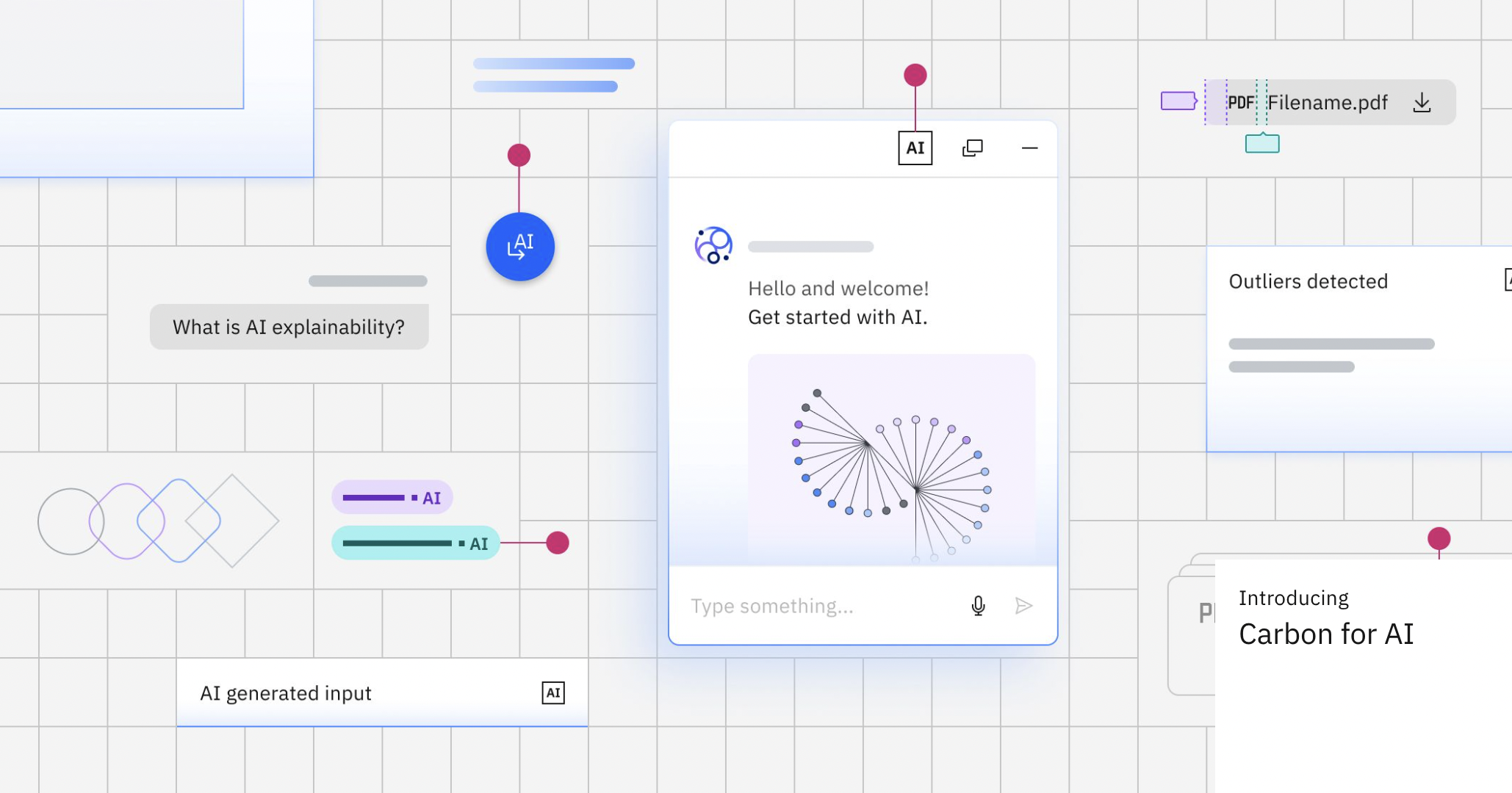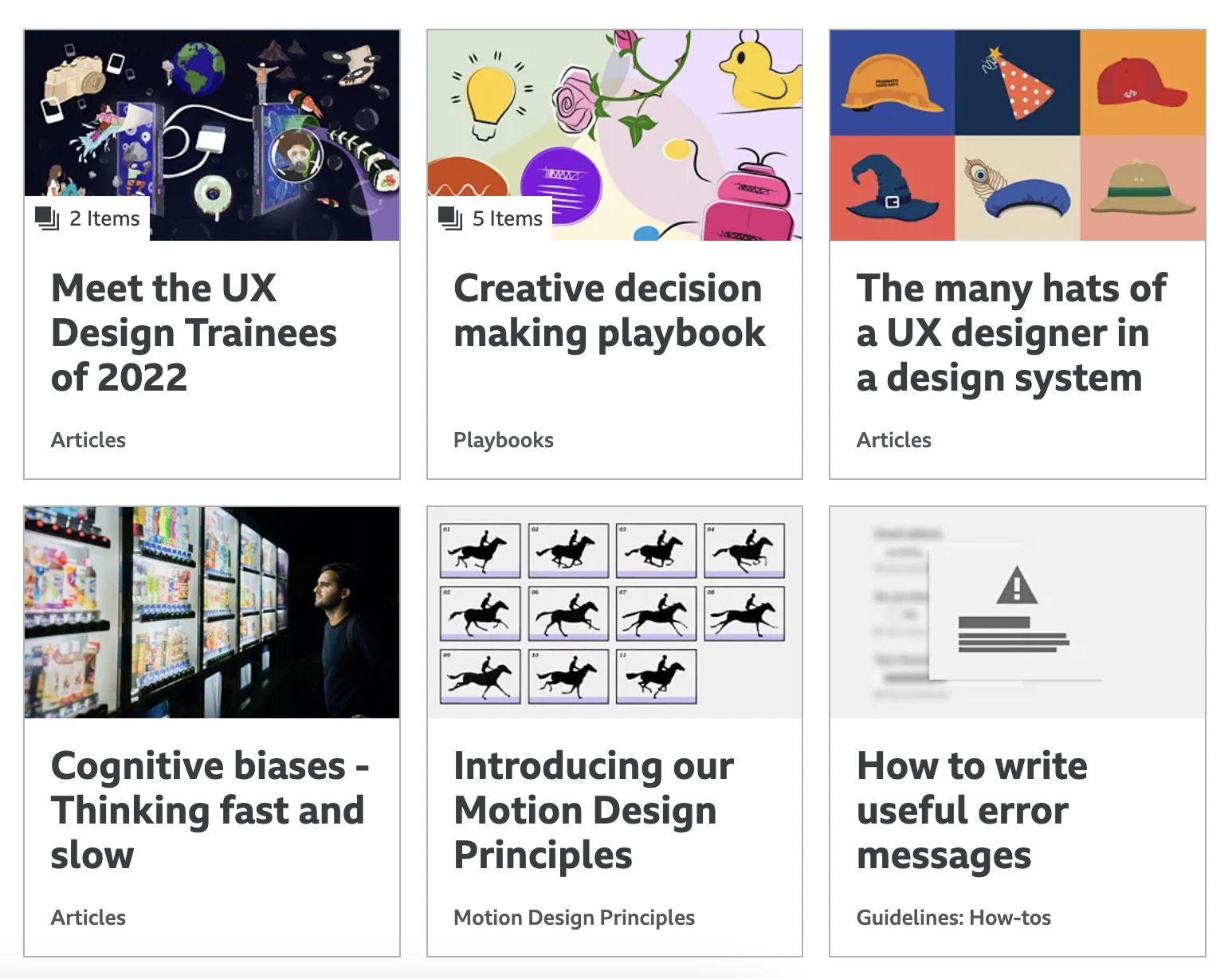Create strategic brand identities
From what to include in brand research to collaborating with clients and designing concepts - are you ready for the quest?!
Video tutorials - helpful tools - pro tips
How it works
Watch videos that cover helpful topics one-by-one
Take on side-quests by checking out linked tools, games and hard-won tips
Speed up your design process by grabbing our templates
Step oneLet’s start with an example
Before we dive into all the detailed steps like contracts and presentations, lets have a look at a sample project together.
This video will give you a nice overview of the different steps and what to consider.
The big
takeaways
To create great brands, you need to have a clear process. Start simple and add more steps, templates and details as you learn from each project.
A brand is all about showing the company values and giving the feeling of the brand rather than showing what the business does.
Your client is your biggest asset. They know their customers, the business and have a lot of great ideas. Focus on collaboration at key moments in the process.
Step twoInvoices, contracts and kick-off
Before we start designing, we have a few important steps we need to cover to make sure the project runs smoothly.
It can be hard to know what to add to these documents so this video walks you through each item step by step. We also cover how to kick off the project in the best way.
The big
takeaways
A proposal is there to make sure you and the client are on the same page with the timeline, scope and budget. Add in some extra personality and nice work samples to show your client what they can look forward to!
Contracts are important when clients ask to change the scope down the line, but also to protect you if any question marks appear after the project is done. Make sure to cover copyright, who owns unused concepts and how you are allowed to talk about the work.
Always ask for a deposit before you start any work together. This helps protect you in case the client disappears on you and it gives you the runway to work on the project. It also shows who is serious about the work from the start.
Step threeDiscovery - Ask all the right questions
Discovery is our first real dive into the project and one of the most important ones. Here we make sure we get to know our client and their vision for the business and project.
In this video, we talk about what to ask, how to structure the meeting and get the most out of it.
The big
takeaways
The key areas we want to cover are:
Why the business started
Who their customers are and what they care most about - what motivates them?
How are they different from their competitors
Their vision for the company and new logo
Their style preferences and likes
If you like to save some time, you can grab our Discovery template from the shop.
Step fourBrand strategy
Brand strategy helps your client understand exactly how to position themselves and it makes the brand you create a lot more valuable.
But where do you start and what should you include? This video covers all my favourite tips to help this stage be both fun and rewarding.
The big
takeaways
Extra tool kit
The emotional reason why someone makes a purchase is where the really exciting insights happen. Don’t get stuck on features, think about how it makes the customer feel.
There is a lot of data already out there! Make use of industry reports and online tools that let you search different data sets to look for trends (linked below)
Habits are a big factor when people make purchasing decisions and it can affect how much we want to actually change in a rebrand - find key components customers look for.
Google trends
Search for keywords related to your client’s industry and find related and trending terms.
Trend Bible
A site full of reports specifically on design trends. Make extra good use of the A-Z trends list and their free articles.
Answer the public
A great way to get to know the ideal customers is by understanding what questions they ask.
Step fourResearch
With lots of information from our client, we can now grab a nice drink and our laptop and gather everything we need for the project.
Brand research is all about understanding what resonates with the audience, what is already out there and how we can create our own twist. This is also a great time to gather images for our mood boards.
The big
takeaways
Brand research has two parts, the psychological and the visual side.
The visual research is all about understanding what competitors look like, what trends we can see from recent rebrands and generally understand the current design landscape.
The psychological side is more about understanding how design decisions make the ideal customers feel. Here we can draw inspiration from other industries that the audience also buys from. How can we create that feeling that makes someone want to support this brand?
When you are ready to put together your research into a report for your client, this template shows exactly what to add.
Step fiveTaking everything we have learned and creating concepts
Now that we have all this strategy and data from out clients, we can start sketching and developing our concepts.
This video will share each step and the thoughts behind the decisions as we create a brand identity together.
The big
takeaways
A strong concept is rooted in the strategy we have already created in our earlier steps. Always keep in mind how it is all connected.
Creating concepts takes time. It can feel challenging before you get those ideas that you really love, but keep going. Bad ideas are just a stepping stone to your next great one 🙌
Stress-test your ideas to make sure they will work practically day to day for the brand. Is it visible at small scales? Does it work in black and white? Is the idea clear enough?
Step sixWork effectively in Adobe Illustrator
With our sketch ready, we can move into creating a vectorised version. We create logos as vectors because they don’t get pixelated when you re-size them.
These two videos are a collection of my favourite tools in Adobe Illustrator and they will help you work a lot smarter 🙌
Side quest
Improve your design skills with these quick online games!
Step eightPresenting your concepts to clients
You have your designs ready, amazing! Now we need to make sure the client fully understands the strategy and thinking behind your design. This is why presentations are so important to get right.
The big
takeaways
A strong presentations always guides the client along to help them understand your thinking.
Take the meeting in person/live digitally. It pays off to explain ideas and meet any questions directly instead of over email.
If you show more than one concept, do it in the same way. Same mockups, same applications so the client can compare.
Step sevenApproved! Now lets put it all together
The client has signed off and it is time to create a brand guide for them to use day to day. The brand guide works like an explainer document but it also has links to all their files and tips for anyone outside of the company that needs to use the brand assets.
The big
takeaways
Add clear sections and show rather than tell. Give clear examples of how colours can be used together, how the design is applied to assets like social media posts and link to all assets to make it easy for anyone with access to download.
Want to save a bit of time? Grab our brand guide template from the shop.
Step sevenNeed more flexibility than a brand guide?
Design systems are like a more dynamic and more extensive version of a brand guide. They tend to include advice and guidelines for other departments - like marketers or developers, but you can shape them however you like!
This video walks you through how to create your own. We use Adobe Xd but you could easily use Figma or any other tool you can easily update and share a link to.
The big
takeaways
A navigation is really helpful for someone to quickly get to the section that relates to their work.
A design system is all about breaking design and strategy aspects down into more detail.
The exact sections you include will depend on the business and the type of applications they have.
Side Quest
Explore some inspiring examples of design systems.
Step eightHand-off and next steps
Hand-off is one of the most important steps of the design process because it helps us keep the client for the long run. We want to give a great “last” impression by making it super easy for them to use the brand.
This is also a great time to ask for referrals, testimonials and if the client would like to continue working together on another project.
The big
takeaways
Try and put yourself in the client’s shoes. What questions will they have and how can we answer them ahead of time.
Create a hand-off package or grab our pre-made template for free 🙌

